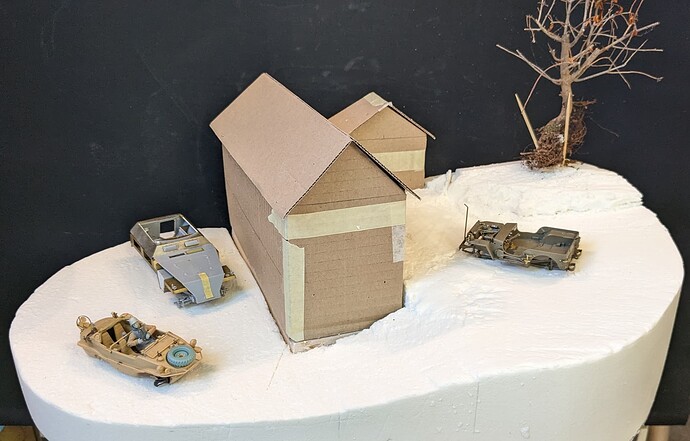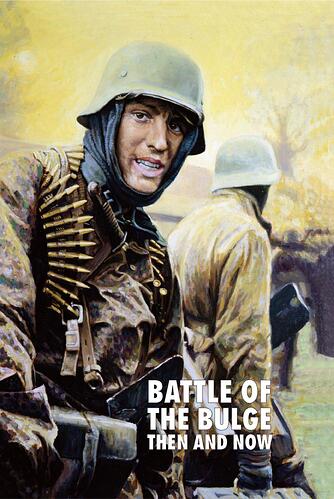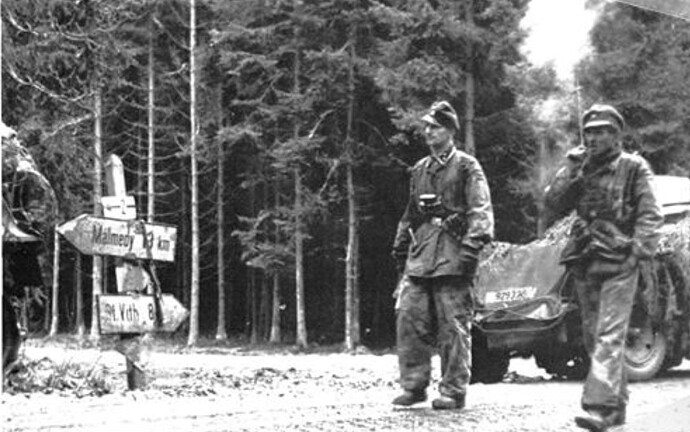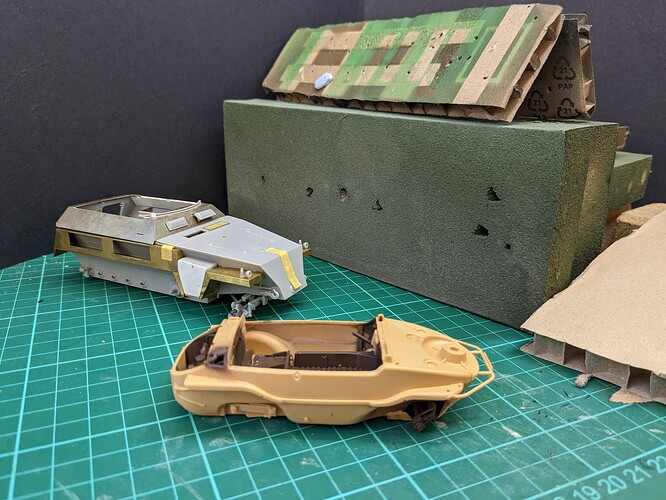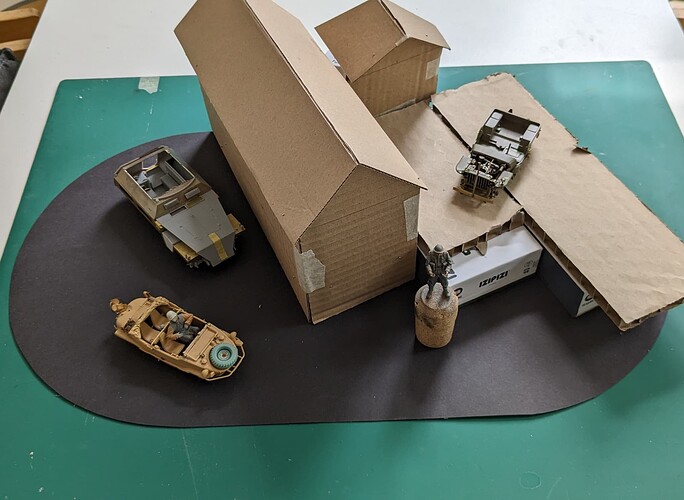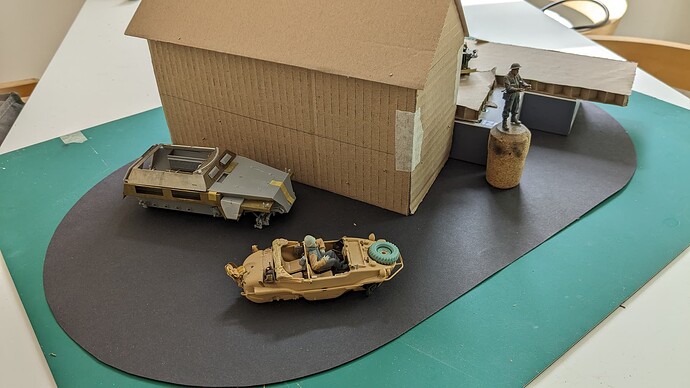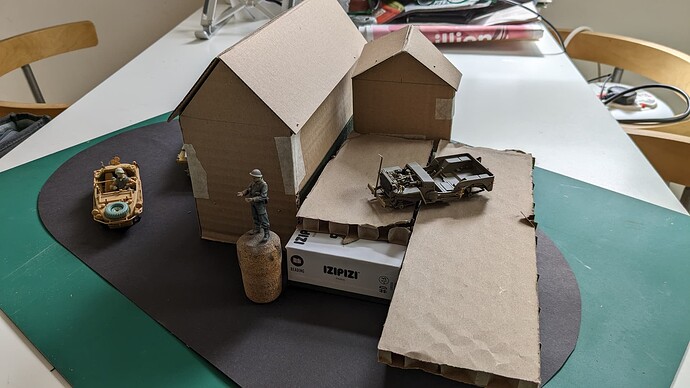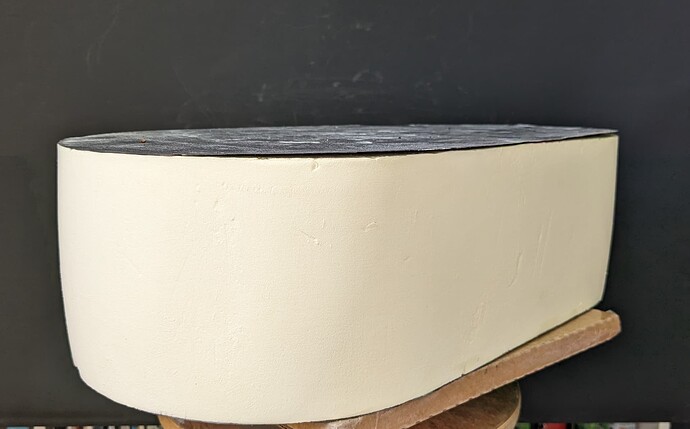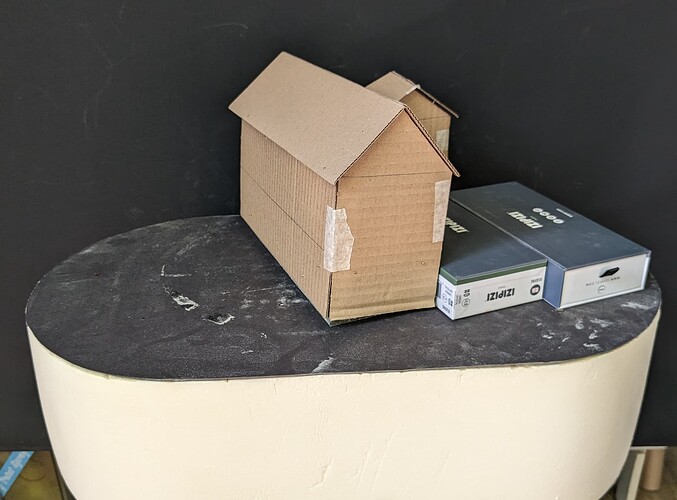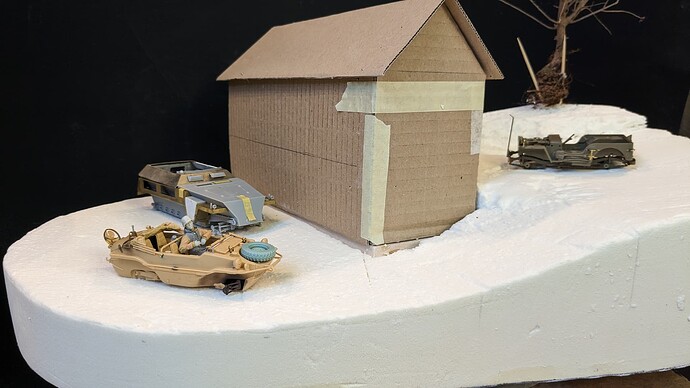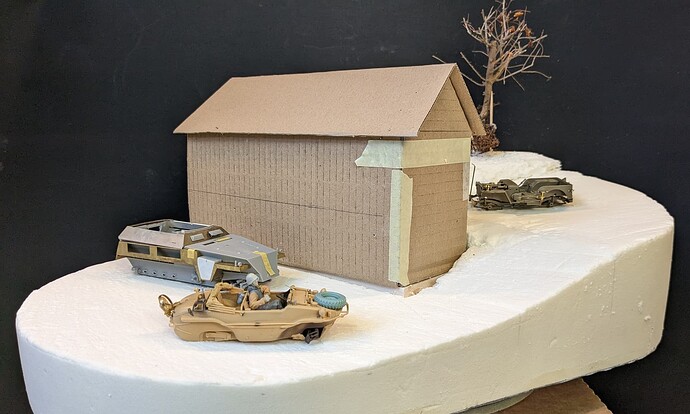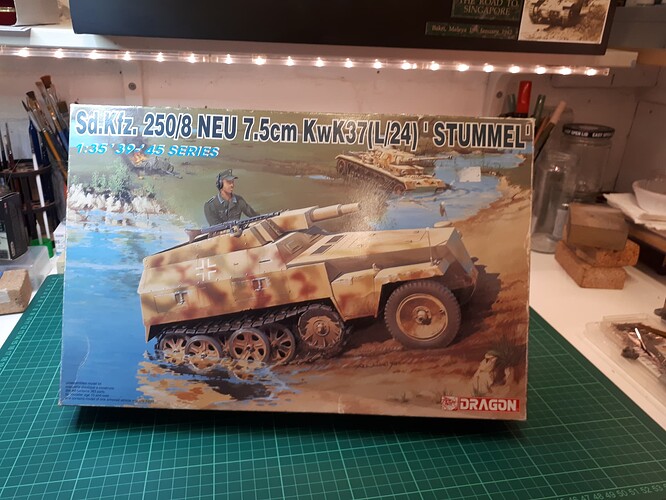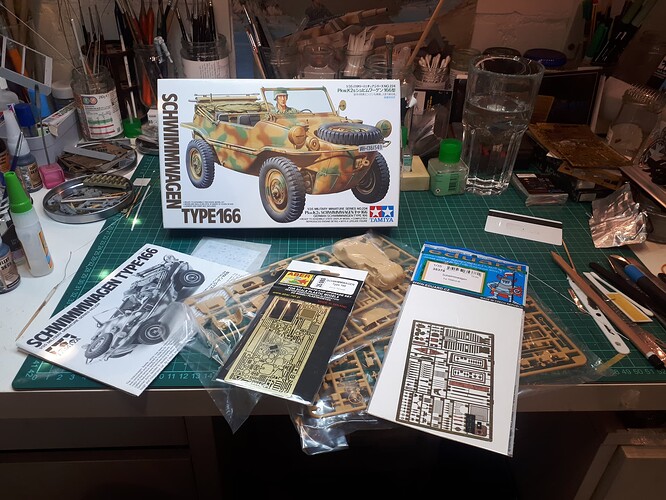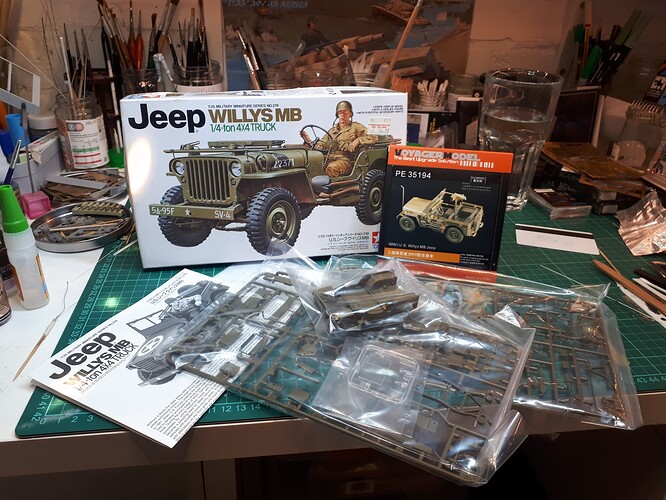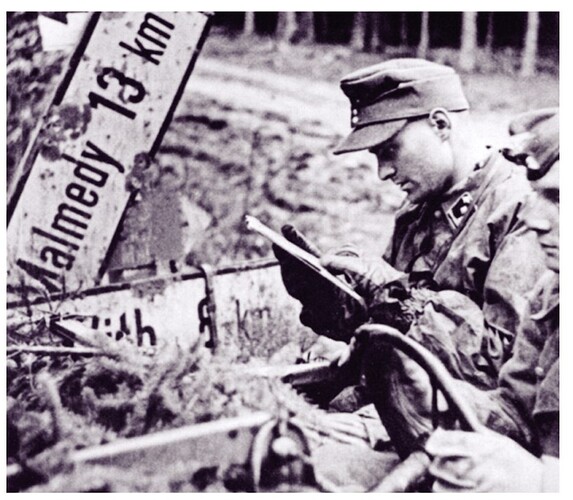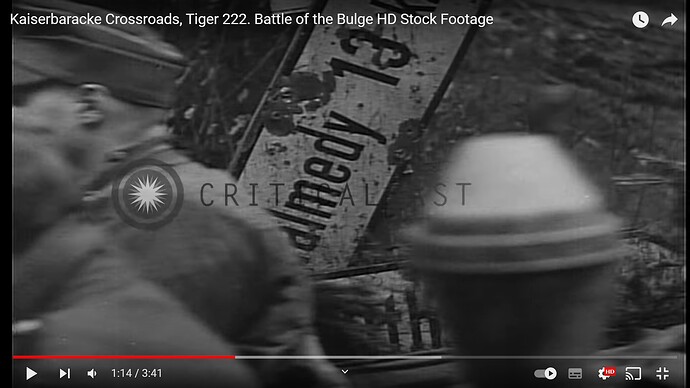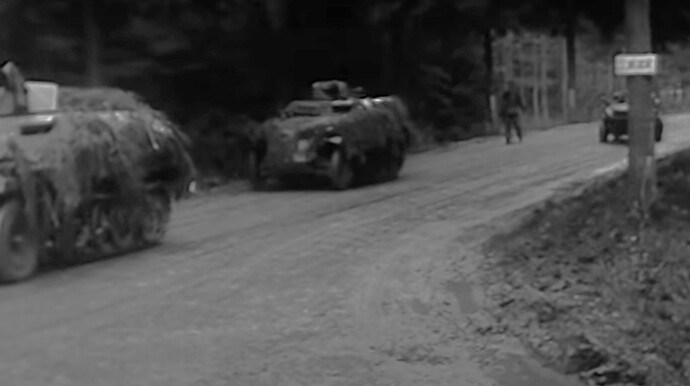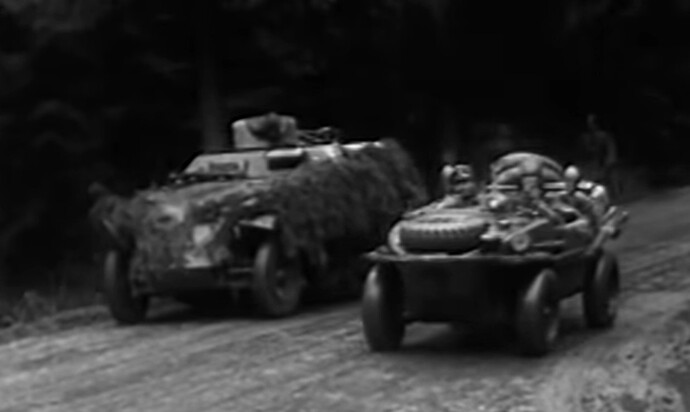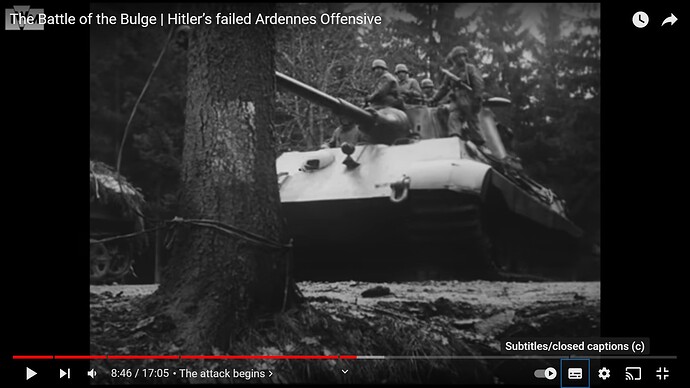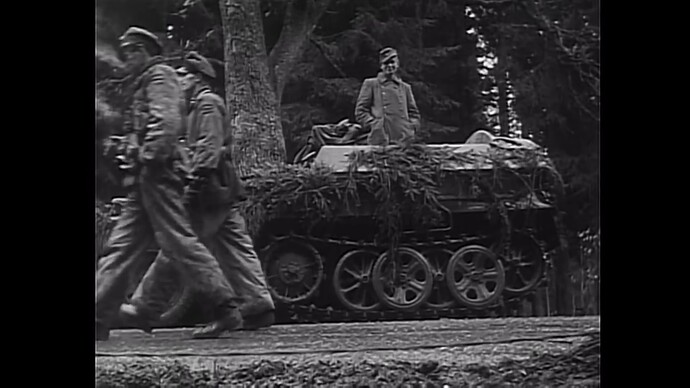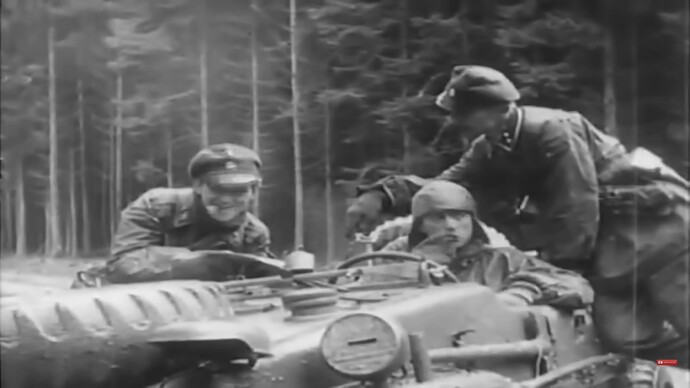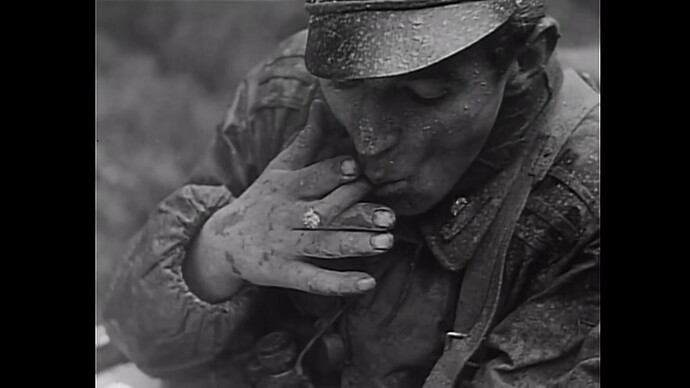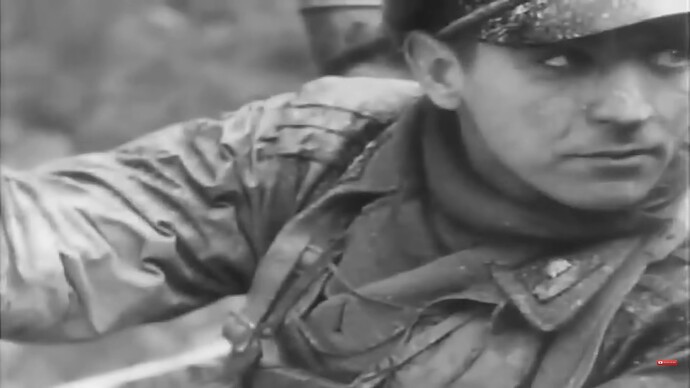A bit more historical context before I get on with the build.
Some of the most famous images of the Ardennes Offensive come from cine film and stills taken by the Germans around the Kaiserbarracke crossroads. The footage was later captured by the Allies and still images have appeared in many books and all over the internet ever since.
The complete film sequence can be found here:
The date quoted for the footage is 18th December 1944. This appears correct because the crossroads were captured at around 5pm on the 17th (by which time it would have been dark) and the well known ‘Ambush at Poteau’ (after which more famous images were taken, including that iconic shot of a smoking Panzergrenadier) actually occurred at around 7am on the 18th December.
Poteau was only a few miles West of the crossroads and various sources say that this engagement (in which several US vehicles were left abandoned and burning on the road) involved Kampfgruppe Hansen, one of three other Kampfgruppes (along with Knittel and Sandig) that were following in the wake of the spearhead of Kampfgruppe Peiper.
So it looks as if the some of the vehicles shown in the footage (all those travelling from right to left past the signpost and tree) were heading in roughly the same direction - but presumably after that battle was already over.
Having watched this many times and taken some screen shots I have found many interesting details which I will be incorporating into this diorama. However, my scene will be showing a moment in the advance which followed.
Taking timings from the clip above:
00:45 - we see the well-known signpost to Malmendy and St Vith. Note that the upper sign is crooked and the US Ordnance Depot sign is still there at the top.
01:02 - after several 251 halftracks (all heavily camouflaged with conifer branches) roar past, the camera pans left and you can just see a Schwimm parked facing the camera on the left. I suspect this belonged to the SS photographers.
01:03 - this clip shows a Schimm parked in front of the sign (still crooked) whilst an Obersturmführer studies his map. Note that he is wearing a grey M43 field cap, camo smock and leather gloves. His rather young looking driver appears to wear a greatcoat and sidecap (and gloves). What I find interesting is the fact that they are not dressed for immediate combat (no helmets for instance), although the officer is wearing full webbing.
The officer has been identified in various sources as either Obersturmführer Leidreiter, commander of the 3. Kompanie, or Obersturmführer Goltz, commander of the staff company of the reconnaissance battalion. I believe that both were part of Kampfgruppe Knittel, so perhaps it matters not. Obersturmführer, by the way, is the rank equivalent to a 1st Lieutenant (US) or Lieutenant (UK).
01:14 - as they drive off you can just see a Panzerfaust secured in the rifle rack on the left side of the vehicle. The Schwimm is also covered in conifer branches.
01:17 - one of the cameramen then straightens the sign with a rifle and discards the US one at the top. From now on the sign remains in this state. As he does so a heavily camouflaged 250 halftrack passes by.
01:35 - a Stoewer 1500a then passes towing a 12cm heavy mortar, turning left (to our right) - presumably in the direction of St Vith (which lay to the South). In the background we can see two 250 halftracks.
01:43 - at this point we can see another Schwimm coming along the road. If we look closely we can see that this is the one which we have all seen many times, with a driver wearing a flying helmet. Note that there appear to be two panzerfausts in the rifle racks.
The next sequence shows Tiger 222 trundling past with a load of Fallschirmjäger aboard.
This is probably where some of the confusion has arisen as to which Kampfgruppe is being shown here, because that Tiger was part of Kampfgruppe Peiper and ultimately ended up being knocked out near the bridge in Stavelot on the 19th December. However, when it was spotted passing through the Kaiserbaracke crossroads it was simply in the process of catching up!
For my purposes, however, I am far more interested in what is going on in the background…
01:53 - just after the Tiger passes we can see a 250 parked on the other side of the road. This is seen again in the sequence showing two officers walking past at (02:02) with a beaming soldier wearing a field cap and greatcoat.
Draped in conifer leaves, this is going to be the basis for the 250 in my diorama, along with a composite of the Schwimmwagens seen at the same time.
02:04 - the sequence that follows shows the well-known Schwimm with the cigar-chomping NCO and driver wearing a flying helmet.
Of note are the fact that this vehicle has already ‘been through the wars’ (it has a broken windscreen for a start) and is covered with mud (as are the crew) - but not with any foliage. Also, like the officer we saw earlier, these soldiers are wearing camo smocks and webbing - but no helmet.
Interestingly, for years this man was consistently mis-identified as Joachim Peiper. In fact, his rank patches show that he was an Unterscharführer (or Sergeant) and he has never been identified as far as I know.
It is aso worth noting that on both Schimmwagen there is no MG mounted either fore or aft and no visible camo paint. It also seems to have been common practice for these vehicles to have a two-man crew at this point in the battle.
Finally, there is no sign of any snow at this point: the terrain is muddy, but not water-logged and it appears to be ‘chilly’ rather than freezing.
Many of these details (and more) are going to form the basis for my LSSAH recce group plunging into enemy-held territory!
